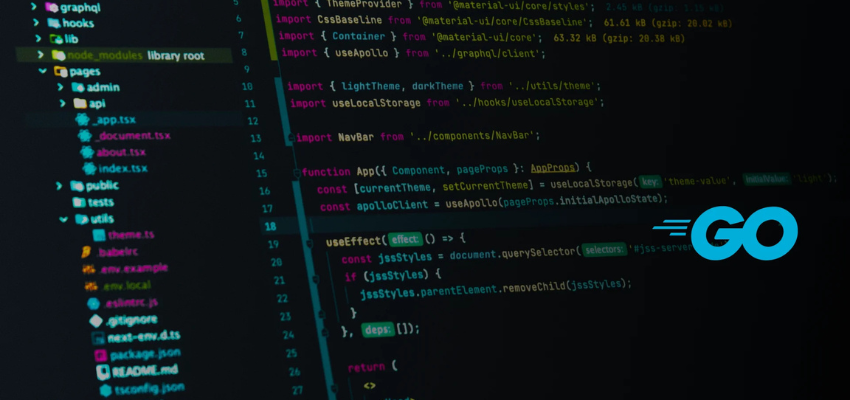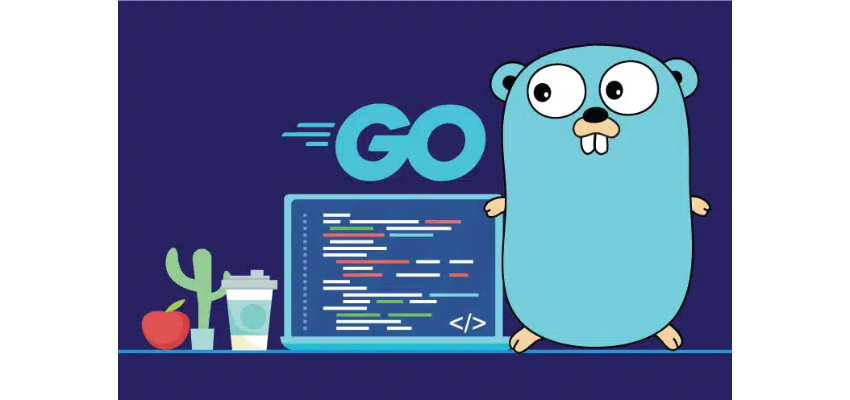Unlocking the Power of Golang Interfaces

Golang, or Go, is a statically typed, compiled programming language created by Google. It was designed for ease of use, efficiency, and scalability. Among its many features, interfaces stand out as a powerful tool that facilitates abstraction and polymorphism in software design. In this article, we will explore the nuances of Golang interfaces, their structure, applications, best practices, and how they can help streamline your coding process.

A Brief History of Golang
Golang, also known as Go, is an open-source programming language developed at Google in 2007 by Robert Griesemer, Rob Pike, and Ken Thompson. The trio designed Go to address shortcomings they observed in other languages used at Google, such as C++ and Java. These languages were seen as cumbersome for large-scale systems, with long compile times and complex dependencies.
The key motivations behind Go were simplicity, efficiency, and speed, particularly for systems programming. They sought a language that combined the best features of both statically typed languages like C++ and dynamic languages like Python, offering strong typing and performance while being easier to use.
Go was released to the public in 2009 as a language that emphasized:
- Concurrency: Leveraging goroutines and channels, Go excels at handling concurrent processes, making it ideal for distributed systems and cloud computing.
- Simplicity: Its syntax is minimal and avoids unnecessary complexity, allowing developers to write cleaner, more maintainable code.
- Fast compilation: Go compiles quickly, allowing developers to work efficiently with large codebases.
Go has since grown rapidly in popularity, especially in cloud infrastructure, microservices, and other backend applications. Projects like Docker, Kubernetes, and various cloud services have embraced Go, solidifying its place in modern development ecosystems.
- 2009: Initial public release of Go.
- 2012: Go 1.0 was released, marking the language as stable and mature for production use.
- 2015: The introduction of Go’s package management system, making it easier to manage dependencies.
- 2020s: Go continues to evolve with enhancements like generics (introduced in 2022 with Go 1.18), making it even more powerful for software development.
Go’s future looks bright, especially in fields requiring efficient and scalable software, such as cloud computing, distributed systems, and DevOps.
Golang Tools
The Go compiler is a crucial component of the Golang ecosystem. It takes your code and converts it into an executable program that can run on any machine. The compiler also comes with various tools like linting, debugging, and code optimization. As an open-source tool, the Go compiler is available for free download from the official Golang website.
Additionally, Golang offers an integrated development environment (IDE) known as GoLand. GoLand is an excellent tool for efficiently writing, running, and debugging code. It features a built-in debugger, code refactoring capabilities, and other useful tools. GoLand is available for both Windows and macOS.
Golang includes a package manager called go get, which simplifies the process of installing packages from the official repository or third-party sources. You can use go get to easily install libraries, frameworks, and any other dependencies needed for your project.
For those new to the language, the official Golang website provides an interactive tutorial called “A Tour of Go.” This tutorial introduces the fundamentals of the language and equips you with the knowledge to get started. It also includes exercises to help you practice your coding skills.
Golang also supports several popular frameworks, including Echo, Revel, and Gin. These frameworks offer tools for quickly building web applications and come with comprehensive documentation that makes it easy to get started.
Golang’s community is active and supportive, with developers eager to assist newcomers. You can find valuable resources on the official website, as well as on platforms like Stack Overflow and Reddit. There are also online communities such as Golang Slack and Gophers on Slack where developers collaborate and help each other.
Lastly, Go provides robust tools for testing code. The official testing framework, Go test, helps developers quickly write tests for their code. Additionally, third-party tools like Ginkgo and Gomega are available to make writing comprehensive tests even more efficient.

Golang Frameworks
- Gin: Gin is a Go-based web framework known for being fast, lightweight, and powerful. It is designed for simplicity and ease of use, making it ideal for developers who want to build web applications quickly. Gin includes features like routing, middleware support, templating, and an integrated testing environment.
- Beego: Beego is another Go web framework that emphasizes speed, flexibility, and user-friendliness. It offers features such as routing, templating, session management, and an integrated testing environment. Beego also supports various web services, including JSON-RPC, XML-RPC, and RESTful APIs.
- Buffalo: Buffalo is a Go web framework that prioritizes rapid development and productivity. It includes features like routing, templating, asset packaging, session management, and an integrated testing environment. Buffalo also supports JSON-RPC, XML-RPC, and RESTful APIs.
- Echo: Echo is a high-performance web framework for Go that focuses on speed and efficiency. It offers features such as routing, middleware support, templating, session management, and an integrated testing environment. Echo also supports web services like JSON-RPC, XML-RPC, and RESTful APIs.
- Revel: Revel is a full-stack web framework written in Go, aimed at providing both speed and productivity. It includes routing, templating, asset packaging, session management, and an integrated testing environment. Revel also supports the same web services, such as JSON-RPC, XML-RPC, and RESTful APIs.

Why Golang Has Become the Go-To Language for Microservices
Golang has gained popularity as the preferred language for building microservices, particularly in the development of distributed systems. Its growing adoption is driven by its efficiency and ease of use, making it a top choice for companies aiming to develop applications and services quickly.
First, as a statically typed, compiled language, Golang is simple to learn and use. Its readability and maintainability make it a perfect fit for microservices, as developers can easily understand and manage the code.
Additionally, Golang comes with a robust set of features ideal for microservices, such as concurrency support, a lightweight runtime, and a built-in garbage collector. Another major advantage is that Golang is cross-platform, allowing it to run on different operating systems and architectures. This flexibility makes it well-suited for building distributed systems that need to operate across multiple platforms. With Golang’s cross-platform compatibility, developers can quickly adapt their code to different environments, enabling seamless deployment of microservices.
Moreover, Golang is fast. Its design prioritizes performance and efficiency, enabling developers to build high-performance applications. The language’s static typing ensures that code runs quickly and efficiently, making Golang ideal for microservices that must process large volumes of requests with low latency.
Lastly, Golang excels in scalability. The language was built to support horizontal scaling, allowing developers to easily add new nodes to their distributed systems without needing to modify the code. This makes it simple to scale microservices as demand grows, ensuring that applications remain responsive under heavy load.
In summary, Golang’s simplicity, powerful feature set, cross-platform support, speed, and scalability make it an excellent choice for microservices. Its strengths in distributed systems have made it a go-to option for developers aiming to build applications and services efficiently and effectively.
Comparing Golang with Other Languages
Golang vs. Rust
Golang
- Features: Static typing, garbage collection, concurrency support, pointer safety, reflection, function overloading, type inference, and operator overloading.
- Easy to learn and use, thanks to its simple syntax and comprehensive documentation.
- Offers good performance due to its static typing and garbage collection mechanisms.
- Promotes clean and readable code, supported by a well-defined style guide.
- Has a large and active community, offering a wide range of libraries and frameworks.
- Provides an extensive set of tools for development, debugging, profiling, and deployment.
Rust
- Features: Static typing, ownership and borrowing model, no garbage collection, concurrency support, pointer safety, pattern matching, algebraic data types, and generics.
- Can be challenging to learn because of its complexity and less comprehensive documentation.
- Delivers excellent performance, thanks to its ownership and borrowing model, and the absence of garbage collection.
- Ensures high-quality code through its robust type system and strict compiler checks.
- A growing and active community, with an increasing number of libraries and frameworks.
- A developing set of tools for development, debugging, profiling, and deployment.
Golang vs. C++
Golang
- Golang is a statically typed language with C-like syntax, but it also includes modern features like garbage collection and concurrency support.
- It is easy to learn, especially for developers familiar with C-style languages, and comes with excellent documentation and a vast library of packages.
- Known for its high performance, Golang has an efficient memory management system and can compile code quickly.
- Golang encourages writing clean, well-structured, and readable code, which leads to high code quality.
- It boasts a vibrant community, with many developers and companies contributing to the language, along with numerous forums and resources for support.
- Golang offers excellent tooling, including integrated development environments (IDEs) and a rich ecosystem of third-party tools.
C++
- C++ is a statically typed language with a powerful feature set and a syntax similar to C.
- It can be challenging to learn for beginners, but there are many resources available for learning the language.
- C++ delivers outstanding performance, benefiting from low-level optimizations.
- C++ can produce high-quality code, provided developers focus on writing clean, well-structured code.
- It has a large and active community, with significant contributions from developers around the world.
- C++ also provides excellent tooling, including integrated development environments (IDEs) and a wide range of third-party tools.
Conclusion
The demand for Golang services is on the rise, and more businesses are seeking freelancers skilled in the language. This growing demand is expected to drive the market and attract more developers to work with Golang. If you’re considering learning Golang, it’s a worthwhile investment, as the language is set to remain relevant for many years to come.
Contact Bestarion
Get started. Pick a plan that suits your needs
Bestarion is a trusted technology service provider specializing in high-quality data services and custom software development. With years of experience in offering Data Entry and Processing. Our team of skilled professionals combines expertise in data management with a strong understanding of the latest technologies. Whether your business needs custom software development or comprehensive data services, Bestarion is committed to helping you achieve your goals.
As a Marketing Executive at Bestarion, I oversee strategic marketing initiatives to enhance brand visibility and drive business growth. Bestarion specializes in data services and bespoke software solutions, helping businesses optimize operations with high-quality, technology-driven solutions. My role involves content creation, digital marketing, and lead generation to position Bestarion as a trusted partner in the industry.
